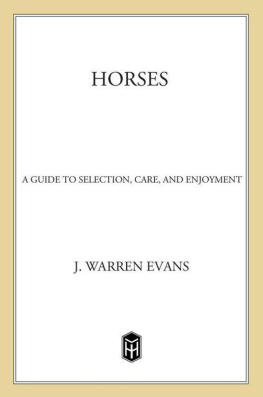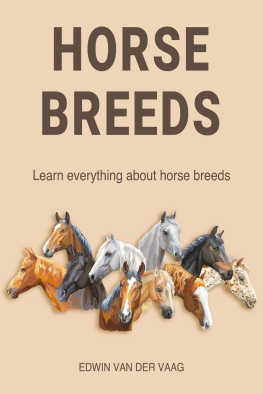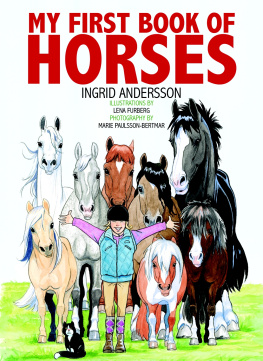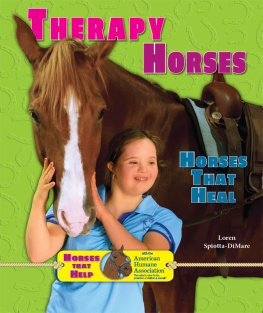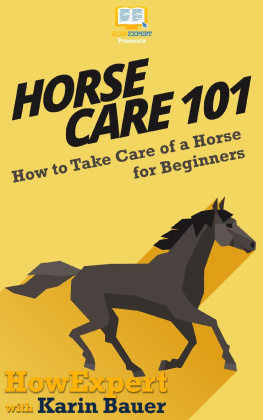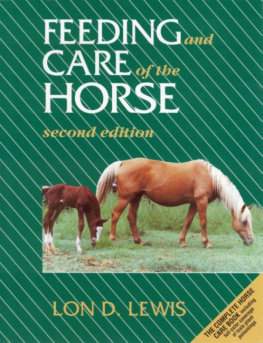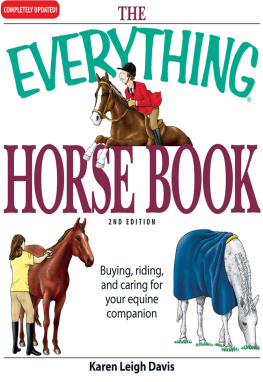The horse has served humanity in many different ways for centuries. Today, it serves primarily as a source of pleasure in technologically advanced nations, but still as a beast of burden and for draft power in underdeveloped countries. This book was originally written to provide people with an introduction to the basic principles of care and management of the horse so that their enjoyment of the horse will be enhanced, and the welfare of the horse will likewise be enhanced. The material presented throughout this edition reflects both our everincreasing knowledge about horse care and training, and the advances in our understanding of disease prevention and control.
Aimed at the introductory equitation, horse management, and horse production courses taught at the undergraduate level, this book was also written to fulfill the need of the general reader seeking information about horses. The text assumes no knowledge of biology, chemistry, nutrition, physiology, medicine, or genetics; and every effort has been made to keep the technical vocabulary to a minimum and the exposition of concepts accessible to the lay reader.
Following an introduction that provides information on moral and legal obligations, costs, and benefits of horse ownership, the book is organized around five central themes. The first concerns the selection and purchase of a horse. Guidance is given in determining the kind of horse to purchase based on the owners needs, locating a horse to purchase, and making purchase decisions. Some of the newer techniques used to determine differences that may affect performance have been added to this edition. Also, the latest information on disease prevention and parasite control programs has been included. The concluding chapter of this part includes details on numerous breeds and their characteristics. Photographs of current and successful representatives for many of the breeds have been updated.
The second part, on ownership responsibilities, discusses physical facilities, veterinary aid, and day-to-day tasks, such as feeding, handling, exercise, grooming, foot care, first aid, parasite control, and disease prevention. The proper planning and construction of the stable site, barns, fences, breeding facilities, and bedding are outlined. The important topic of fire safety is discussed in the context of physical facilities. The related issue of accident prevention is paramount in the discussion of proper methods of restraint, routine handling, and basic training. The chapter on nutrition has been expanded to include the relationship of nutrition to reproduction, as well as the concept of body condition scoring and its use in nutritional management. Practical approaches to the use of behavioral principles in managing and training horses have also been added.
Using and enjoying the horse comprise the third major theme. This part encompasses riding and driving, horse shows and races, rodeo, trail, and other sports events. Basic procedures and equipment for riding, driving, racing, and other equestrian activities are described in detail.
The fourth section of the book concerns reproduction and genetics. One chapter is devoted to breeding the stallion, and another to breeding the mare. The material on reproduction is unique in that step-by-step details are provided for successfully breeding and foaling the mare. Pregnancy care and various problems concerning foals are also discussed, in a separate chapter. The chapter on reproduction has been updated to provide the latest information on embryo transfer, computerized recordkeeping systems, care of the young foal, the use of ultrasound, and improved methods of estrous cycle control, including the use of GnRH and new artificial light program schedules. The segment concludes with a chapter on basic genetic principles for selecting and breeding superior horses.
The final section is a new chapter devoted to the business aspects of horse ownership. Hopefully, it will serve as a guide to the many aspects of business decisions that must be made concerning horse ownership and management for various uses.
For the more serious student of horse husbandry, numerous appendices contain detailed, technical information on ration formulation, semen evaluation procedures, and pregnancy determination. There are also glossaries of racing and rodeo terms, and addresses of breed associations and horse magazines. An extensive bibliography, organized by chapter, concludes the book.
If the reader increases his or her enjoyment of the horse and if the general care of horses is improved, I will have achieved my objectives in writing and revising this book.
Owning a Horse
H umans have been closely associated with the horse since its domestication in the Near Eastwhere it was first used as a draft animalbetween 4500 and 2500 B.C. And before that, the horse was a major source of food for us. By 1000 B.C., domestication had spread to Europe, Asia, and North Africa. After the development of machinery powered by fossil fuels, the horse was no longer a needed source of power in economically developed countries. In America, the horse population reached its peak in the early 1900s, declined until the 1950s, and regained a good deal of popularity in the late 1960s. Today, horses in the United States are mainly kept for recreational purposes. Because few people had contact with horses between 1900 and 1960, horse management skills were rarely passed to the next generation. Many American families are now having their first experiences with a horse or are relying on grandparents for assistance.
OWNERSHIP OBLIGATIONS
Uninitiated owners, lured by the horses esthetic and athletic appeal, soon realize that owning such an animal is not like the romantic horse stories they read as children. As wonderful and rewarding as horse ownership can be, owning a horse involves a considerable amount of time, dedication, and hard work. Owners must be prepared to spend more time caring for the horse than riding it. A horse requires attention every day of the year when it is kept confined. It must be fed, watered, groomed, have its feet cleaned, and be exercised. The owner must muck out and clean stalls daily and must take care of the tack and equipment.
OWNERSHIP COSTS
In addition to labor, the owner must be prepared to take care of the considerable financial obligations of horse ownership. Actual costs are not presented because they constantly change. The ensuing discussion calls attention to the many financial obligations that one assumes. Each cost must be calculated accurately to assess the total financial obligation of horse ownership. Before a horse is purchased, certain economic facts must be considered. The initial cost depends on several factors that determine the horses value: its training, age, breed, and temperament. Other factors, such as color, conformation, manners, and soundness, also affect the decision to buy. All these factors are discussed at length in Part I, Selecting and Buying a Horse, Chapters 13.
One of the first considerations is the cost of stabling a horse. These costs vary depending on the use of a stall in a barn with or without adjoining paddock, pasture, or outside paddock. If the horse is kept at a commercial stable, there may be additional costs for labor, feeding, stall cleaning, and exercise. The costs for stabling vary quite widely depending on factors such as area of the country, location within an area (urban, suburban, or rural), quality of the facilities, and extra services provided. If one owns the facilities required to keep a horse, one must include the cost of construction or purchase, maintenance, electricity, taxes, interest on investment, and water expenses.

